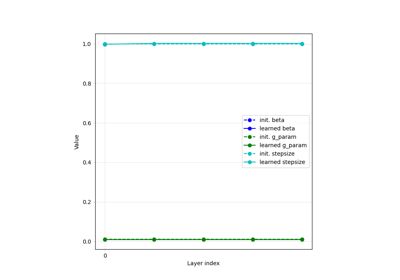BSDS500#
- class deepinv.datasets.BSDS500(root, download=False, train=True, splits=None, transform=None, rotate=False)[source]#
Bases:
ImageDatasetDataset for BSDS500.
BSDS500 dataset for image restoration benchmarks. BSDS stands for The Berkeley Segmentation Dataset and Benchmark from Martin et al.[1]. Originally, BSDS500 was used for image segmentation. However, this dataset only loads the ground truth images. The dataset consists of RGB color images of size 481 x 321 or 321 x 481 and is divided into three splits:
“train”: contains 200 training images
“val”: contains 100 validation images
“test”: contains 200 test images
Despite the name, the “val” split is often used for testing (e.g., it is a superset of CBSD68), while the “train” and “test” splits are used for training.
This dataset uses the file structure from the github repository BIDS/BSDS500 from the institute which published the dataset.
Raw data file structure:
self.root --- BSDS500-master --- (all files from the github repo)
- Parameters:
root (str, pathlib.Path) – Root directory of dataset. Directory path from where we load and save the dataset.
download (bool) – If
True, downloads the dataset from the internet and puts it in root directory. If dataset is already downloaded, it is not downloaded again. Default at False.train (bool) – If
True, the standard training dataset (containing the splits “train” and “test”) will be loaded. IfFalse, the standard test set (containing the “val” split) is loaded (which is a superset of CBSD68). Default at Truesplits (list of str) – Alternatively to the
trainparameter, the precise splits used can be defined. E.g., pass["train", "val"]to load the “train” and “val” splits. None for using the splits defined by thetrainparameter. Default None.transform (Callable) – (optional) A function/transform that takes in a PIL image and returns a transformed version. E.g,
torchvision.transforms.RandomCrop.rotate (bool) – If set to
Trueimages are rotated to have all the same orientation. This can be important to use a torch dataloader. Default at False.
- References:


